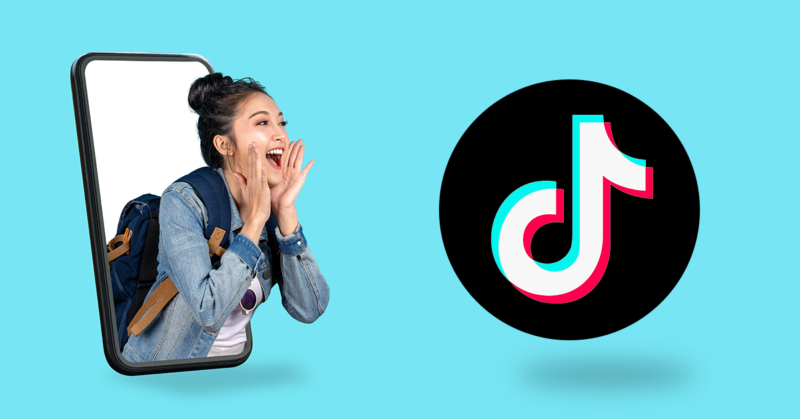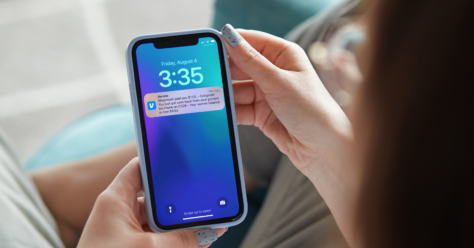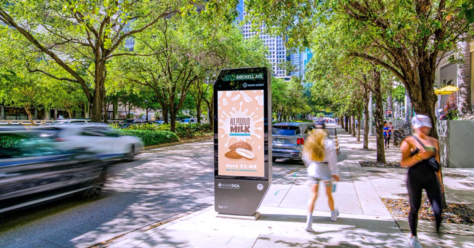How Tiktok Is Effectively Being Used by Influencers
What’s all this talk about TikTok? The short-form video social media app, with its refined algorithm that delivers curated content feeds around each user’s interests, has surged in popularity during the pandemic. Not only can TikTok boast more than 84 million active monthly users in the US, but its success has prompted other social apps like Instagram to create similar short-form video features of their own.
The growth of TikTok and its impact on other social media services present dynamic opportunities for brands to share their products through influencers, ads and more. Keep reading to learn how your brand can meaningfully connect with consumers through TikTok and other platforms that share short-form video.
How Tiktok Is Effectively Being Used by Influencers
What’s all this talk about TikTok? The short-form video social media app, with its refined algorithm that delivers curated content feeds around each user’s interests, has surged in popularity during the pandemic. Not only can TikTok boast more than 84 million active monthly users in the US, but its success has prompted other social apps like Instagram to create similar short-form video features of their own.
The growth of TikTok and its impact on other social media services present dynamic opportunities for brands to share their products through influencers, ads and more. Keep reading to learn how your brand can meaningfully connect with consumers through TikTok and other platforms that share short-form video.
TikTok’s Rise to the Top
With over 2 billion downloads of the app, TikTok has certainly disrupted the social media landscape. TikTok has already surpassed Instagram to become the second most popular social media app for US teens, and it continues to gain market share on social networking leader Snapchat.
On TikTok, users share videos up to 3 minutes long set to music, sound bites, original audio and more. The time restriction opens up a realm of creativity in which people add various special effects to express themselves.
Though TikTok was already well established before the pandemic, COVID-19 restrictions accelerated usage of the app as people spent more time at home and relied on their phones more heavily for entertainment, advice and creative release.

How TikTok Differs from Other Platforms
Besides the signature dances and unique sound snippets, TikTok has other key differentiating features. Perhaps TikTok’s most important attribute is its extremely refined algorithm that quickly connects a user with content that captivates them—sometimes leading to engagement time that belies the shorter video format. On average, TikTok users spend 52 minutes a day on the app.
Unlike other apps such as Instagram, Facebook and Twitter that can also incorporate picture and text components, TikTok is solely video. Although captions can be used on TikTok, they’re easily overlooked and often unnecessary. Compared to YouTube, another video-centric platform, TikTok stands out with its shorter, less varied content length as well as a mobile-first interface that naturally consumes the entire screen.
TikTok Content Leveraged Across Other Platforms
While TikTok’s content is uniquely its own, it can be leveraged across other platforms. For instance, many TikTok users will cross-post their videos on Instagram feeds and as Instagram Reels.
Additionally, as Quotient’s Senior Influencer Relationship Specialist Megan Dobberteen shared, it’s easy for influencers who already have a following on other platforms to direct people to find them on TikTok.
“The way they do it is by uploading Reels that showcase their TikTok @ handle and by adding a link to their TikTok profile in their Linktree or Instagram bio,” Dobberteen explained.
Influencers are finding TikTok to be a great way to both foster their loyal following and connect with new people, as the sophisticated algorithm puts their content in front of users with similar interests. The growth goes both ways, since TikTok allows users to plug their other accounts as links in the bio section. This way, TikTok influencers can also increase their followers on YouTube, Instagram, Twitter and more.



TikTok: The Modern Day Word of Mouth
Word of mouth remains an incredibly powerful and trusted method for people to learn about new products and services from friends and family. In the digital age, word of mouth has translated to the influencer community as people feel close and connected to authentic personalities. Since online influencer marketing first started to take off, it has caught the attention of brands as an opportunity to expose relevant audiences to their product offerings.
Online followers trust content creators to recommend quality products so they don’t waste their money. Throughout the course of the pandemic in particular, consumers have sought value through trusted advice on the goods they purchase.
Meanwhile, with people’s typical brand choices fluctuating in availability during the pandemic, brand loyalty also experienced a shift. The time period from 2020 and beyond has served as perfect opportunity for brands to connect with new consumers who are searching for products that fill their needs.
An endorsement from a trusted influencer can be reassuring to shoppers who are unable to find their preferred products or are interested in trying new things.
Even though people are leaning on the trusted advice of social media influencers more than ever, remember that Generation Z has been around for the entire influencer wave—from the early days of micro influencers who were happy to trade coverage on their blog and social channels for free products to the influencer marketing industry of today, where influencers can achieve celebrity-like status and lucrative deals with major household brands. Unsurprisingly, audiences of younger demographics who have witnessed this evolution seem to be leaning away from idealized online representations in favor of the often raw, authentic content presented on TikTok.
Reaching Exactly the Right Audience Through Niche Communities
Another facet of TikTok that resonates so well with younger generations is how many niche communities are established on the platform.
According to Dobberteen, “There is a common question about what side of TikTok you are on—Are you on beauty TikTok? Lifestyle TikTok? Family TikTok? Cooking TikTok?—among many more options.”
TikTok’s unique algorithm quickly identifies what type of content best suits each user and funnels them into specific niche communities. Younger audiences value individuality and discovering their niche in online communities—meaning brands could benefit from a micro influencer strategy when targeting audiences through short-form video.
Creating Timely Content
TikTok by nature brings many new influencers, large and small, to the forefront through its refined algorithm. In the same way, new trends—dances, hacks and sound bites—also rise up quickly on the platform.
TikTok is a fast-moving app, which can be exciting for users and creators but might present a hurdle for brands that want to create timely content. Approval processes for advertisers can take weeks or months, whereas TikTok trends sometimes last days.
To combat this issue, Dobberteen shared how brands can create content that integrates seamlessly into TikTok or Instagram Reels and also fits into your content process: “Brands can work with influencers to make short-form videos that integrate into the platform and share your brand with audiences regardless of trends, creating sound bites that are catchy or displaying hacks that feature your product.”
For instance, a makeup brand could work with a beauty influencer to share hacks for picking the perfect shade of foundation, or a tortilla brand could create a video that quickly shows how to make a work-from-home lunch featuring their product.
Interested in more short-form video strategies or leveraging content across platforms through trusted content creators? Contact us at communications@quotient.com to get started.



